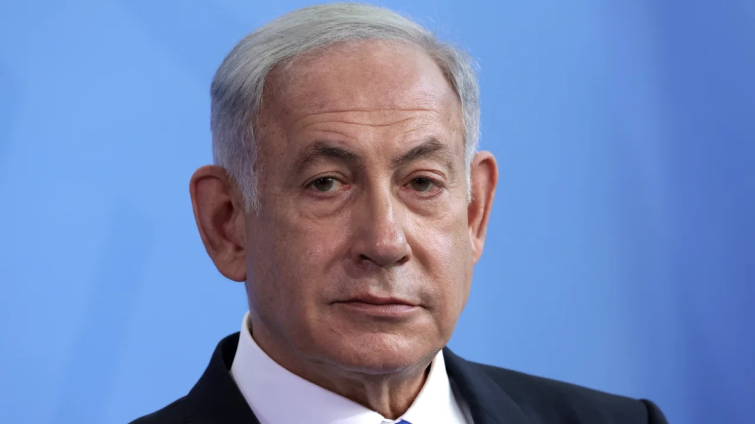A year ago, Kazakhstan’s most critical post-independence stress test arose from a bureaucratic decision to end fuel subsidies on propane and butane, used mostly for cooking and transportation by the low-income population. The move, of course, resulted in higher prices, which stoked political protests. Those protests quickly became violent. In Almaty, the country’s largest city, and elsewhere, some 238 people dead in the riots and approximately 7,000 arrested. It was a mess. All told, 2,000 people were arrested and/or prosecuted. Damage was estimated to be close to $3 billion, Foreign Policy magazine said at the time.
The January crisis endangered what has mostly been a peaceful Kazakhstan, a major exporter of oil to China and elsewhere, with December output close to 1.9 million barrels a day.
The Moscow-led Collective Security Treaty Organization (CSTO) sent troops at President Kassym-Jomart Tokayev’s request, but left within a week and were not part of the policing that took place to stop the protests. Some had gone so far as to predict a Russian occupation of Kazakhstan, but that never happened.
Oil importers and corporate investors were skeptical about Kazakhstan’s ability to maintain its energy exports last year – the lifeblood of its economy.
But now the country has had ample time to breath. The protests are far in the rear-view mirror. The government was re-elected by wide margins. Now what? The Russian crisis remains. China an important consumer of Kazakh oil, is only now starting to re-open.
Six weeks after the January events in Almaty, the war in Ukraine began, a major headache for Kazakhstan and all of post-Soviet space. The war overshadowed Kazakhstan’s political crisis at the time, a surprising fallout from years of steady calm. Tokayev managed to come out of it all unscathed, stepping out of the long shadow cast by his predecessor, Nursultan Nazarbayev, who ruled from the late Soviet era until as recent as 2019. Tokayev was re-elected last year with 81%, despite the tragedy that kicked off 2022.
In the crucial time between the riots and the elections, Tokayev revamped his administration and gave protesters a break. It was like signing a peace treaty with the people.
In June, a new constitutional referendum was approved, limiting the president to a single 7-year term. Tokayev used the referendum and his renewed mandate to give amnesty to the majority of protestors, and retrieve embezzled assets hidden abroad, another staple of ex-Soviet life.
The new constitution banned presidential family members from occupying political and state company positions. He went as far as to investigate two nephews of Nazarbayev and other relatives of the former president.
Under the referendum, the Ombudsman for Human Rights had its powers strengthened while women and youth are given a greater presence in the government. (Two women candidates contested the November presidential election, a first.)
Russia’s war with Ukraine was initially a headwind for the Kazakh economy.
There was even concern that Kazakhstan’s neutral position and its strong economic ties with Russia (and membership in Eurasian Economic Union) would lead to Western sanctions. But Kazakhstan was never on the radar for that, unlike China, which has lent diplomatic and financial support to Russia over the last year and increased its joint military operations.
Despite initial setbacks, including Kazakhstan’s currency losing 19% of its value in just three weeks, Kazakhstan got a break. It has absorbed human capital fleeing Russia, including those laid off by companies contracting with Western tech firms, and young men who do not want to be enlisted in the Army and sent to Ukraine. Fifty multinationals relocated from Russia to Kazakhstan, and UK-based mining giant Polymetal is preparing to relocate to Kazakhstan.

Sanctions a Concern, Still
Kazakhstan refused to tow the Russian line on Ukraine, avoiding secondary sanctions. Russian commerce was restricted to some extent. Russian and Belarussian truckers bringing European cargo from Russia to Kazakhstan were required to carry import permits issued within the EU in order to enter the country.
The country’s largest bank, Halyk, suspended the use of Russia’s Mir payment cards, erring on the side of caution. The bank is traded in London and is one of the leading blue-chip stocks for Kazakhstan investors. It appears executives and government oversight asked to Halyk to go the extra mile.
To avoid oil getting sanctioned by mistaking it for Russian crude, authorities in Astana renamed oil exported via Russian seaports to ‘Kazakhstan Export Blend Crude Oil’.
In all of this, it does not seem that Russian and Kazakh relations have been torn, despite some glitches in oil exports through the Russian port of Novorossiysk on the Black Sea. Russia needs all the goodwill it can get, and so is unlikely going to pick a fight with a long-standing ally, understanding their fear of sanctions by the West.
Kazakhstan seems to have gone the extra mile to show it is neutrality, and its interest in keeping with moving towards Western-liberal democracy norms.

Tokayev’s hosting of the Seventh Congress of World and Traditional Leaders in September with Pope Francis I in attendance, was another signal that the country believes in international cooperation, not conflict. Close Kazakhstan-watchers refer to this as the government’s long-standning multi-vector foreign policy, which deals with the North, South, East, and West as equal partners
The Commonwealth of Independent States, of which Russia is a member, had their Council of Foreign Ministers meet in Astana in October. A month prior, Tokayev met with China’s leader Xi Jinping for his post-pandemic trip abroad, something Time magazine called “highly significant” for his choice of making Kazakhstan his first stop. Astana was also the host city for heads of state from Russia, Turkey, and Qatar in talks about Syria and energy development.
Europe is interested in Kazakhstan, despite its distance, hoping that Kazakh exports through the Middle Corridor can be an alternative to Russia, too. Italian energy company ENI and local QazaqGaz said in September that they will be jointly investing in a new Kashgan Gas Processing Plant to ship gas to Europe. Last year, the European Union entered into a “strategic partnership” with Kazakhstan on green hydrogen and raw materials worth $50 billion. The EU represents 60% of foreign direct investment in Kazakhstan.
The European Bank for Reconstruction and Development has currently invested over $500 million in 14 projects to produce 800 MW of renewable energy in Kazakhstan. A lot of this is for infrastructure for state owned power producers, and not for the manufacture of wind turbines or solar panels, a market that is mostly Chinese.
China Well Established; U.S., Not So Much
Kazakhstan is far from America’s historic region of influence. It was once part of the Russian Empire and the Soviet Union. Its has a long border with the second most powerful economy in the world. All trains head West, to Europe. The U.S. has been involved in fossil fuels in the 1990s. The private sector – led by investment banks Goldman Sachs and Nasdaq – helped set up the Astana International Finance Center, the Epcot-looking finance hub of the country.
But a year after a bumpy January 2022, the U.S. is not focused on Kazakhstan despite its energy and geo-strategic position. The country has moved on from last winter’s protest season and successfully sailed through elections without calls for do-overs.
Europe is investing. China is back. They’ve established Kazakhstan as a beachhead for their One Belt One Road policy, a soft power policy of economic development that promotes Chinese finance, Chinese tech, and Chinese construction equipment wherever it goes. Kazakhstan is expected to see more China activity after a pandemic pause.
China expanded its cooperation after localizing much of its investments through a range of new projects designed to address local concerns. In 2022, China deepened its economic cooperation, with Kazakh oil exports to China increasing by over 400%.
Crucially, China also came to Kazakhstan’s defense when Russia was angered by its neutrality over Ukraine. Xi penned an unprecedented article supporting Astana’s sovereignty.
Despite the dramas of 2022, Kazakhstan managed a 3.1% growth rate, $111 billion volume in foreign trade, and a bit more political liberalization.
Parliamentary elections are scheduled for March 19. The date coincides with Nauryz, the Kazakh spring tradition of moving beyond negativity and into renewal. Symbolically, it coincides with Nazarbayev’s resignation in 2019.
I still think Kazakhstan, while so far away from it all, is looking to Europe and the U.S. to play a major role in their transformation from an old Soviet no-man’s land. To date, Washington has not gone after Kazakhstan for their China ties.
European investment has given Kazakhstan no ultimatums on China, for that matter, but has had a singular focus there – energy markets.
American companies with money in Kazakhstan went from panic in January, as the WSJ reported, to becoming some of the largest investors in Kazakhstan in September. Boeing, General ElectricGE +2.3% announced new business there. New Orleans fast food chain, Popeyes, said in December it plans to open its first restaurant there this year.
The U.S. government rarely talks about Central Asia. In the era of strategic competition with China, however, watching the region get taken under China’s wing will eventually lead to less opportunities for American companies there. Kazakhstan is roughly the size of Western Europe, and has long been seen as the best investment in the region. While last year’s political upheaval had a temporary chilling effect, a year later, it appears that the worst is behind, and investors are coming back.
Source : Forbes







